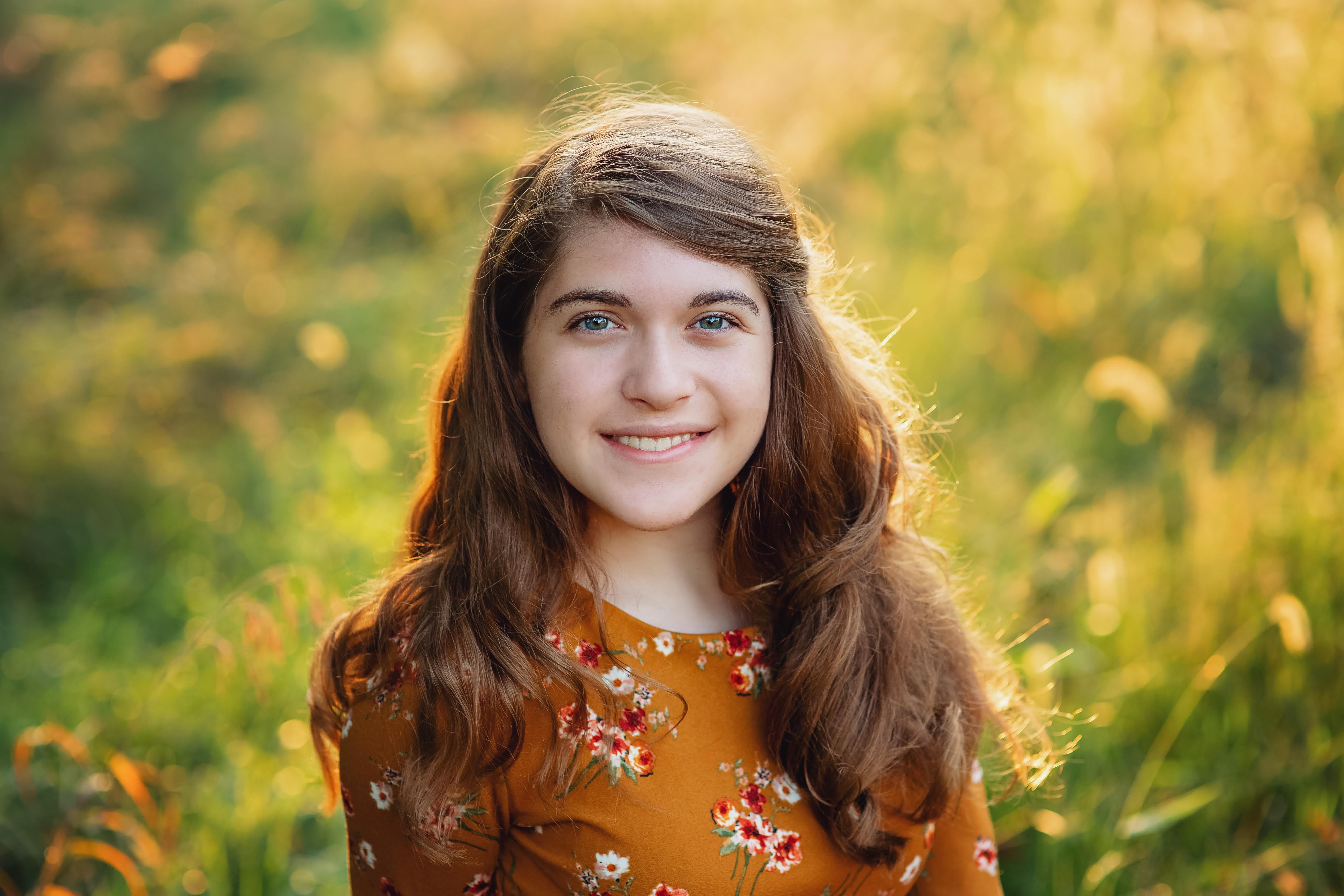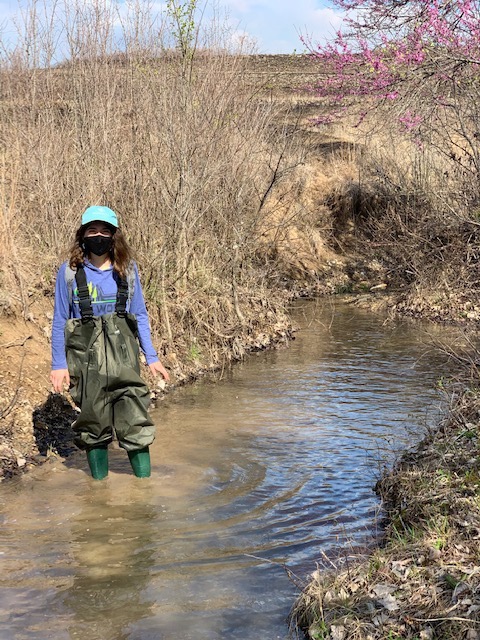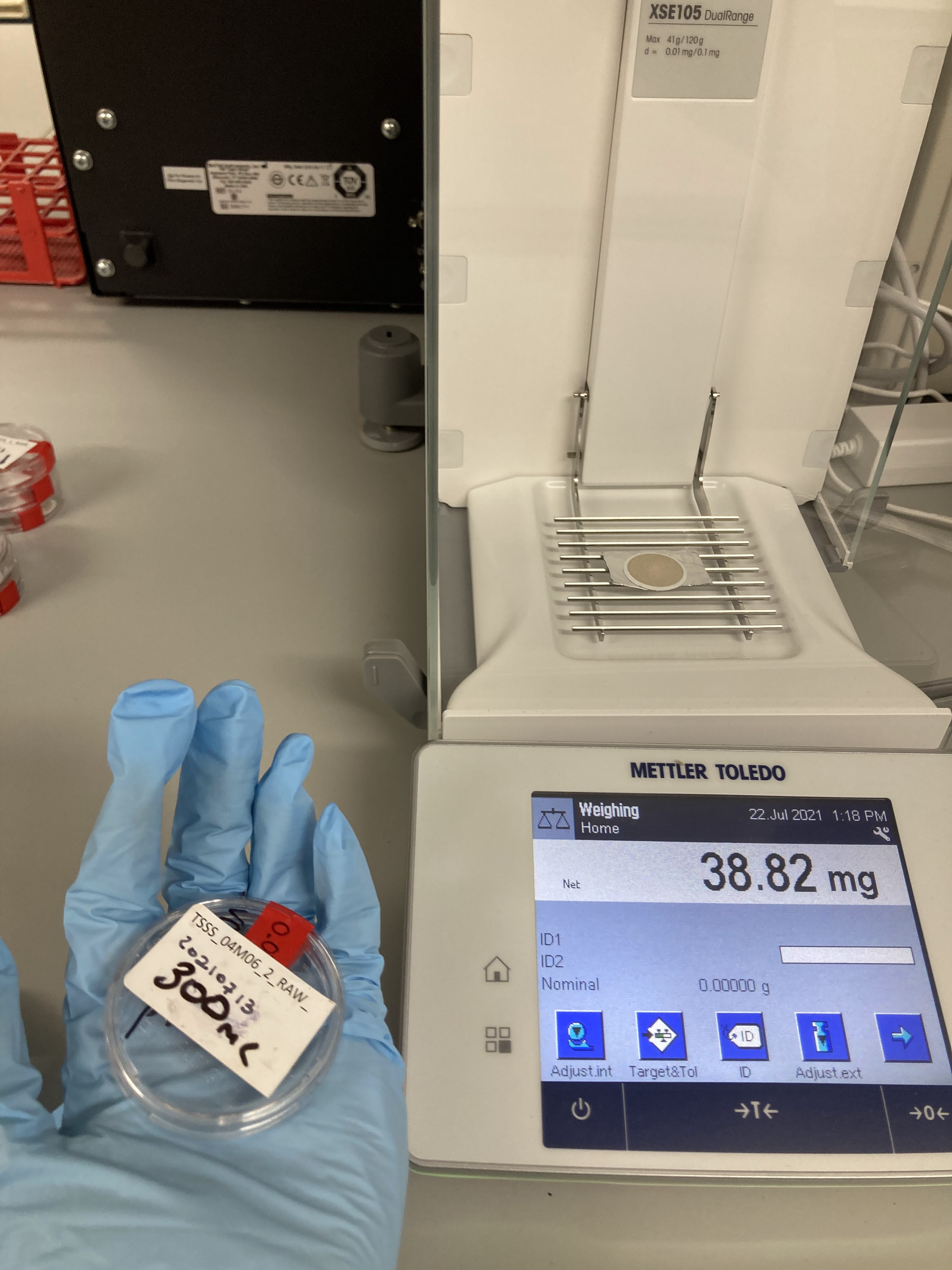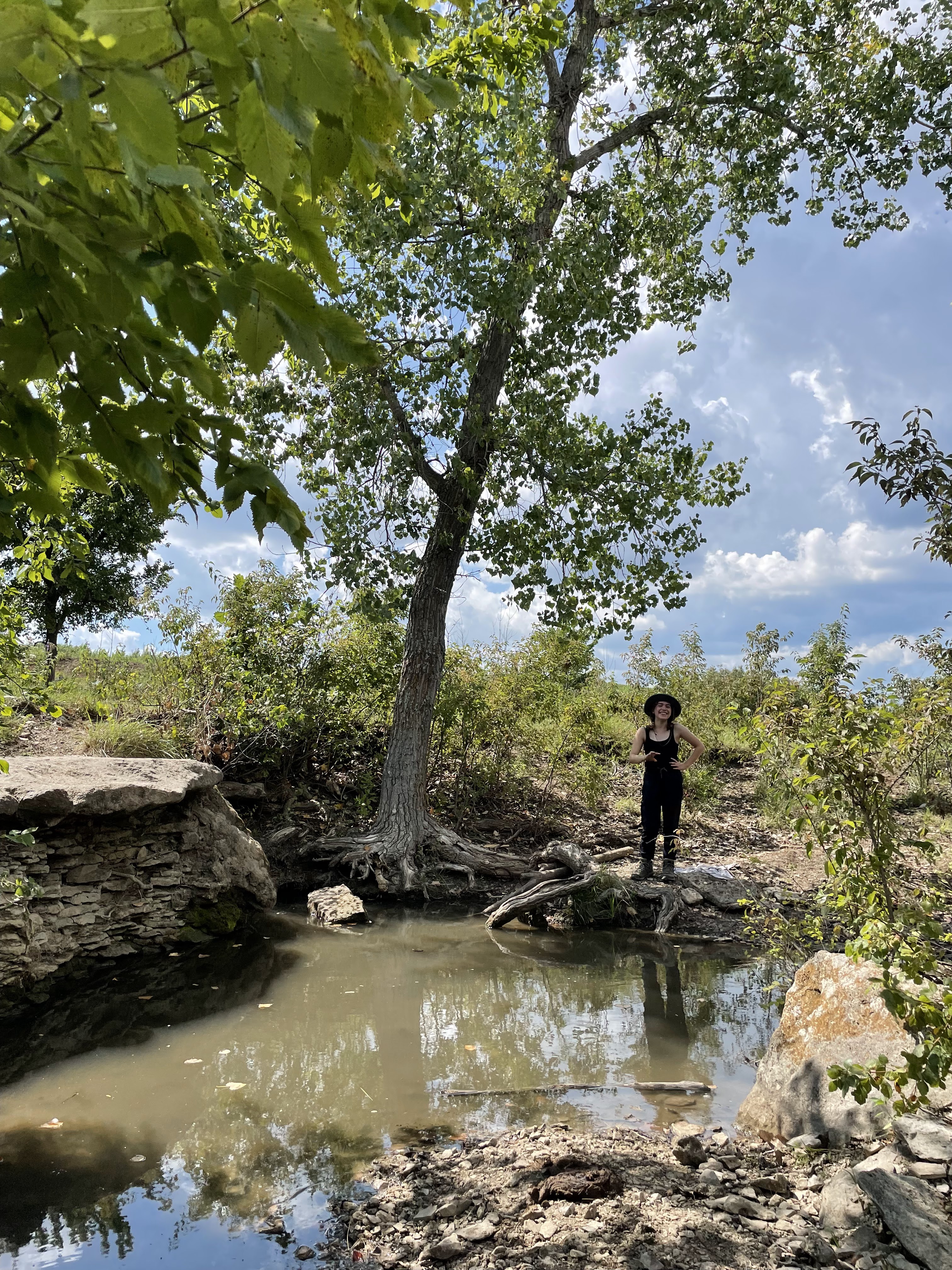KU Biology Student Researcher: Eva Burke

Eva Burke is a Sophomore double majoring in Ecology & Evolutionary Biology & Environmental Studies.
Eva's Research at KU
“I've been working in Dr. Amy Burgin's lab [...] since last February. At first, they had me get comfortable in the lab doing dishes and helping with field work prep. Then I learned how to use the ion chromatograph and I would run water samples through it. The [ion
chromatograph] reads anions and cations, and those samples either come from our grad students’ projects or from NEON, which does nationwide studies, and they send us samples to analyze. Since then, I’ve been working on data analysis and learning the other instruments in our labs, including the gas chromatograph.”

Eva's Konza Prairie Research
“Over the summer I helped with some endeavors focused on the Konza Prairie. That research focuses on intermittent streams as a whole and I was given the TSS (Total Suspended Solids) samples, so I’ve been looking at sediment transfer in intermittent streams.
For TSS the amount of sediment in the water gets higher as [the stream] dries and becomes a series of isolated pools; these pools get really mucky, and likely have a greater concentration of sediment, anions and cations, and nutrients that animal life depends on.”
How did you first become interested in research?
“I’ve always been interested in getting lab and research experience in the sciences, since that’s what I’m considering as a future career, but I didn’t know what it entailed, so I wanted to get that undergrad research position.”
What does your research look like on a day-to-day basis?
"I'm working on data analysis for my samples. Over the summer and fall I collected and processed TSS samples; this means running stream water through a filter, then heating the filter in an oven to remove water weight and determine the mass of sediment in that volume of water.
Now I have all that data, and I'm analyzing it by running it through a program that lets me visualize the data in many different ways, looking for patterns that might give me insight into what factors control TSS."
What’s something interesting you’ve learned from the research?
“Intermittent streams make up more than half the streams worldwide and they effect the water qualities that humans and larger ecosystems rely on. But because they are intermittent, in most cases, water protection policy doesn’t apply to them. Most intermittent streams in the US aren’t protected so they can get polluted really easily.
So, the overarching goal of the AIMS project is to get a better understanding of intermittent streams and how they affect other water systems so that we can get those protections when and where they are needed.”
What did you find most challenging about doing your project?
“Learning how to navigate the academic world as opposed to normal class work. You are tossed into an environment with grads students who know so much more than you, they have years more of education and as an undergrad it feels weird sometimes to ask them questions that are probably obvious to them. But it’s really important to ask those questions, and interact with those educated people because that’s how you network and build up those skills that you don’t necessarily know and learn which skills you need to know.”
What do you plan to do after you graduate from KU?
“It’s still far in the future for me, but I think I’ll go into the workforce for a few years because I want to find out what I really want to do and then I’ll come back for a graduate degree and get my masters.
However, I want to study how ecosystems interact with people.”
